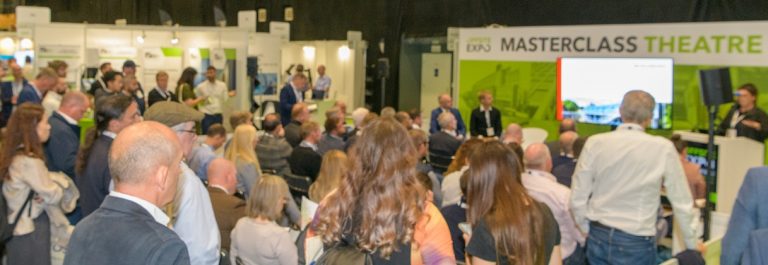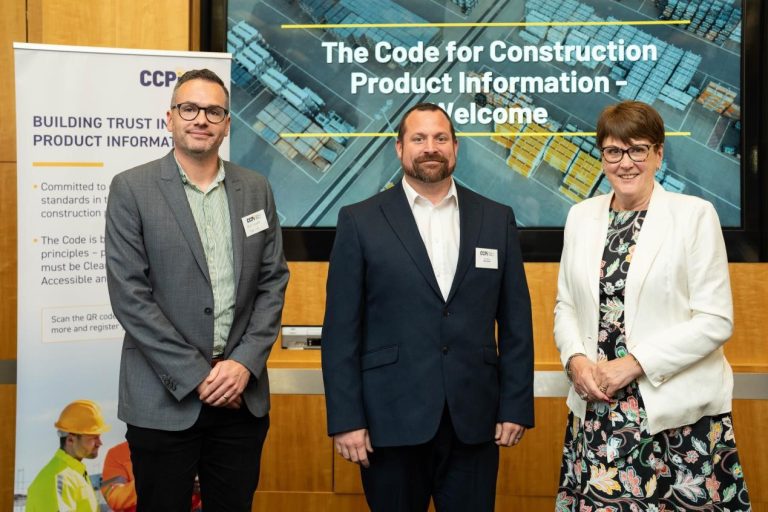by Michael Durnin, Head of Construction, Murphy Geospatial The construction industry is facing big challenges including a shortage of skilled labour, increasing material costs, adverse weather conditions and mounting pressure to hit carbon reduction targets. These pressures not only hinder project timelines but also tighten budgets, which can put the whole project at risk. There are ways to minimise risk and increase margins despite the current market conditions. In this article I explore the top five reasons to explore geospatial data as part of your construction project and the benefits that high-quality geospatial data can provide. According to Autodesk’s research, in Europe 40% of the average organisation’s data is bad, leading to poor decision making 41% of the time, and in the UK 32% of data used by construction companies is bad leading to poor decision making 31% of the time. Data inaccuracy comes from disconnected communication channels where site data is shared, or using outdated information that hasn’t been validated. Geospatial data offers the opportunity to take live projects from build to digital reality, filling the gaps in lost data and streamlining data sharing amongst your team so that everyone has one version of the truth. Geospatial measurements are crucial during construction as it provides the framework for optimal digital delivery, multiple stakeholder collaboration, and is the cornerstone of automation. As mounting pressure to address the construction industry’s impact on climate change rises, there is a growing recognition of the potential offsite construction brings to drive sustainable development and tackle systemic challenges like fragmentation, skill shortages, and outdated construction methods. Modern Methods of Construction (MMC), particularly the rise of offsite modular construction is reshaping the industry in 2023. In place of ad-hoc reworks which take place in situ, MMC has been credited with offering 20% cost savings and 50% faster project timelines*. The success of modular construction hinges on precise location data, accurate dimensions and positioning of structures which can be repeated, offering a ‘fit first time finish’ with no nasty surprises. MMC is also hailed as the method to enhance efficiency, reduce waste, and minimise conflicts, all of which hold significance for stakeholders concerned with both costs and environmental impact. Construction is entering the tech world in a big way following the huge increase in digital working. Now, the next phase of tech advancements in construction are embedding automation, using AI, machine learning, and robotics. The benefits of autonomous workflows have been shown in in Hexagon’s Autonomous Construction Tech Outlook 2023 with the report stating that 60% of industry leaders expect them to impact competitiveness, profitability, satisfaction, and sustainability. Companies using four or more autonomous workflows also report notable improvements, including 58% in sustainability, 55% in collaboration, and 52% in safety compliance. Automation’s evolution necessitates precise alignment and environmental considerations to avoid costly rework. Digital tools, comprehensive mapping, and real-time capture of site conditions all play a pivotal role in achieving successful implementation and reducing errors in the construction process. The construction industry deals with numerous inaccurate assets daily. Harnessing the power of information can reduce rework, errors, and risks. Informed decision-making, enabled by geospatial information, leads to better quality, and enhanced return on investment. The Get It Right Initiative estimates that the construction industry could save between £10–25 billion per annum simply by eliminating error. Experts recognise BIM as a tool that not only shapes the future of construction design but also serves to mitigate risk by identifying and resolving design errors at an early stage. While BIM holds the promise of fostering collaboration on construction projects, its success hinges on effective onboarding, implementation, and cross-functional data-sharing. This becomes especially critical given the persisting challenge of project data standardisation across the industry. Alongside reducing reworks necessary when an error is spotted, finding out there’s a discrepancy early on can help you reduce the need for those awkward conversations that require multiple people to gather in a room and hash out where the blame should sit. Data doesn’t lie and it offers everyone reassurance. With the use of geospatial information during builds, conflicts and errors can be identified and resolved in the digital build environment, rather than the field, reduce costs and risk and improving on quality as well as health and safety. Empowering progress through geospatial management Geospatial management extends beyond specific mapping and modelling techniques but to a collaborative process that considers the unique requirements of any given construction project. Collaboration in this approach reduces errors, leading to enhanced project outcomes and cost savings. Data-driven decision-making and accurate measurement are paramount. By adopting geospatial data and processes, projects can achieve unparalleled productivity, sustainability, and profitability. This transformation will revolutionise construction, creating a more resilient and sustainable built environment for future generations. Building, Design & Construction Magazine | The Choice of Industry Professionals














